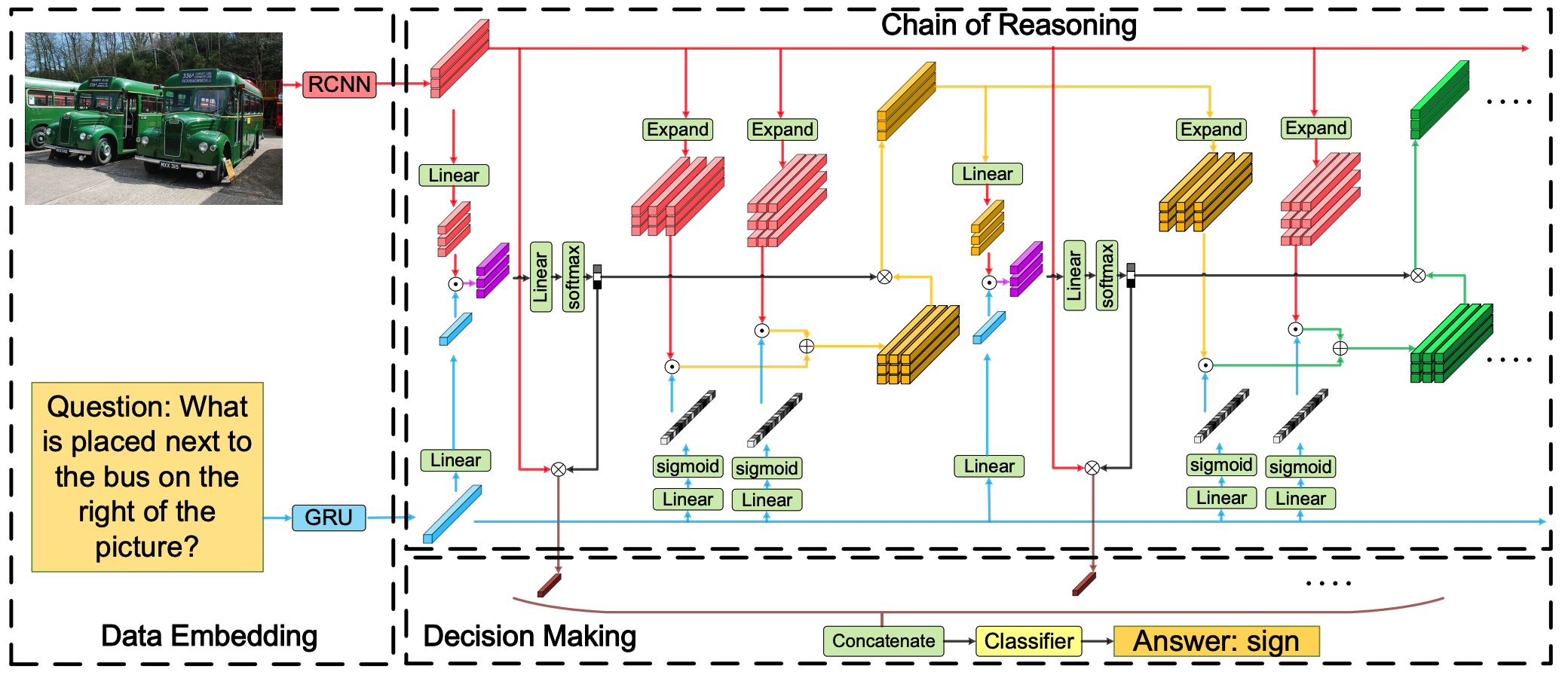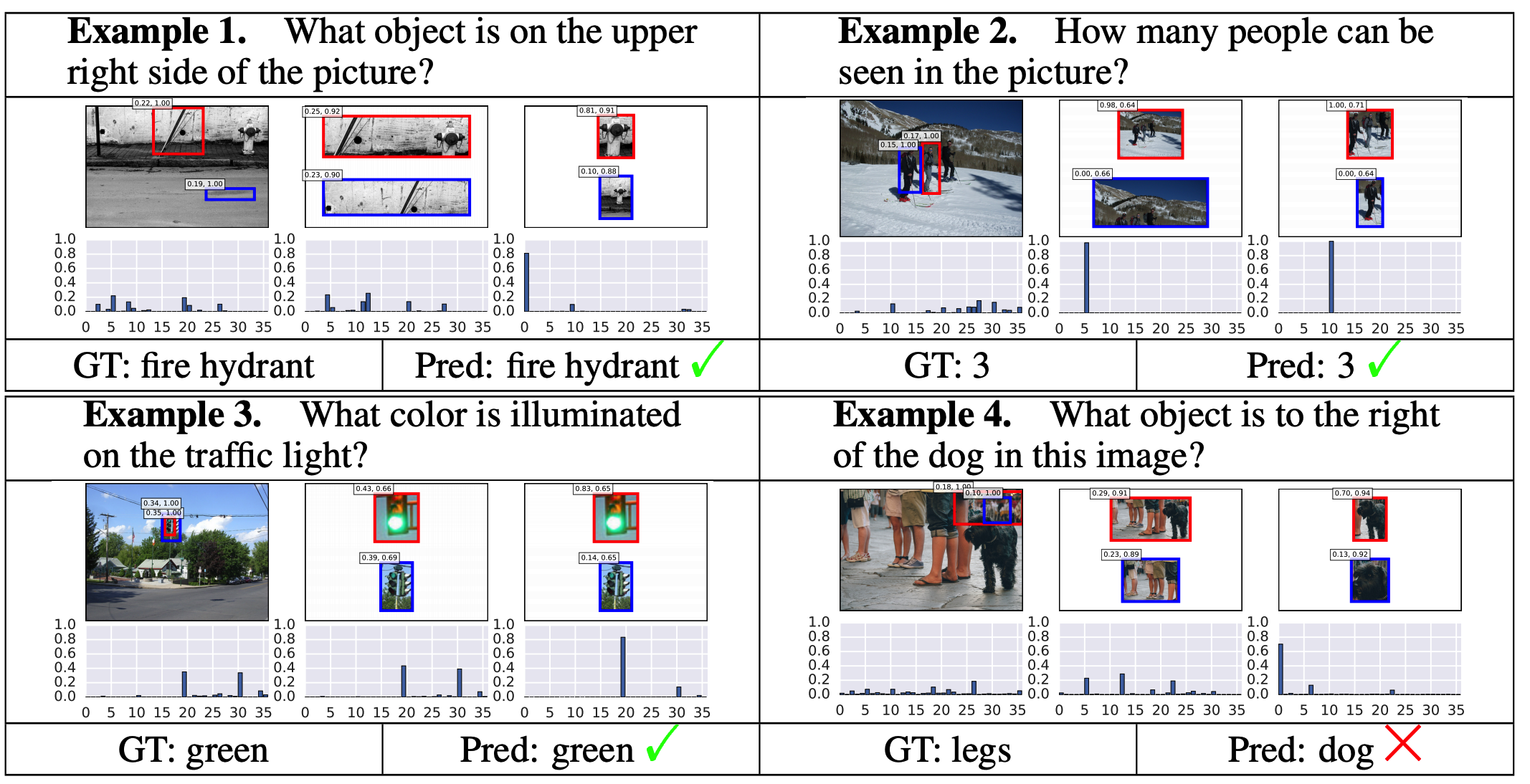Chain of Reasoning for Visual Question Answering
WHY?
Previous methods for visual question answering performed one-step or static reasoning while some questions requires chain of reasonings.
WHAT?

Chain of reasoning(CoR) model alternatively updates the objects and their relations to solve questions that require chain of reasoning.

Cor consists of three parts: Data embedding, chain of reasoning and decision making. Data embedding encodes images and questions into vecors with Faster-RCNN and GRU respectively.

Chain of reasoning step consists of a series of sub-chains that perform relational reasoning and object refining. Given that objects of image denoted by O^{(t)}, output is calculated as follows.
P^{t} = relu(o^{t}W_o^{t}), S^{t} = relu(QW_q^{t})\\
F^{t} = \sum_{k=1}^K(P^{t}W_{p, k}^{t})\odot(S^{t}W_{s, k})\\
\alpha^{t} = softmax(F^{t}W_f^{t})\\
\tilde{Q}^{t} = (\alpha^{t})^T O^{t}Relations of objects are calculated with guidance conditioned on question. Objects are refined with weighted sum of relations.
G_l = \sigma(relu(QW_{l_1})W_{l_2}), G_r = \sigma(relu)QW_{r_1})W_{r_2}\\
R_{ij}^{t} = (O_i^{t}\odot G_l) \oplus (O_j^{(1)}\odot G_r)\\
O_j^{t+1} = \sum_{i=1}^m \alpha_i^t R_{ij}^tDecisions are made with all the objects from each step.
O^* = [relu(O^{1}W^{1});relu(O^{2}W^{2});...;relu(O^{T}W^{T})\\
H = \sum_{k=1}^K(O^* W_{O^*, k})\odot(QW_{q', k})\\
\hat{a} = softmax(HW_h)So?

CoR achieved the best result on various VQA tasks including VQA 1.0, VQA 2.0, COCO-QA, and TDIUC. Visualization shows CoR performs appropriate reasoning.
Critic
I think more explanation is needed in architecture of relational reasoning and object refining step. Also, performance difference in ablation studies seems too trivial to draw conclusion.
